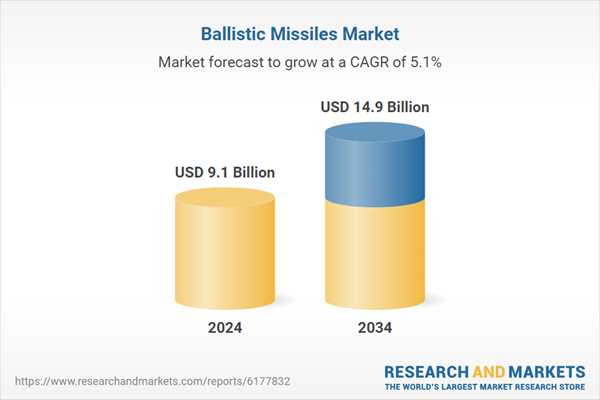Key drivers contributing to this growth include rising global defense expenditures, the modernization of outdated missile arsenals, technological advancements in propulsion and targeting systems, and intensifying regional and international conflicts. Countries across the world are significantly increasing their investment in missile capabilities, aiming to strengthen both their strategic deterrence and rapid response frameworks. Upgrades to legacy platforms are shifting the focus toward more sophisticated propulsion systems, enhanced re-entry technologies, and precision targeting. The evolving threat is pushing the transition from conventional missile classes to more advanced types such as hypersonic, maneuverable reentry vehicles (MaRVs), and precision-guided systems. This development reflects both national security priorities and the growing complexity of modern warfare.
The short-range ballistic missile (SRBM) segment held a 32.9% share in 2024 owing to its tactical advantages in regional conflict scenarios, rapid deployment capabilities, and cost-efficiency. Nations with limited budgets and high-threat environments are adopting these systems to meet fast-response needs and strengthen deterrent postures. Market players should prioritize innovation in compact propulsion, scalable warhead configurations, and enhanced targeting to align with emerging regional requirements and modernization mandates.
In 2024, the ground-based missile segment held a 51.6% share. Its appeal lies in broader payload options, extended strike range, and lower cost relative to sea or air-based systems. It also supports both tactical and long-range defense strategies. To remain competitive, manufacturers are encouraged to develop next-generation hypersonic and solid-propelled systems, integrate advanced precision technologies, and increase collaboration with expanding defense programs in newer markets.
U.S. Ballistic Missile Market reached USD 3.1 billion in 2024, driven by sustained investment in both strategic and tactical missile capabilities. Defense firms should focus on boosting the accuracy, reliability, and performance of missiles while working closely with federal agencies to align with current military modernization strategies. Providing cost-effective, scalable systems remains crucial in securing long-term defense contracts.
Major participants shaping the industry include Roketsan, Northrop Grumman Corporation, BAE Systems plc, RAFAEL Advanced Defense Systems Ltd., MBDA, Lockheed Martin Corporation, Bharat Dynamics Limited, BrahMos Aerospace, Israel Aerospace Industries Ltd. (IAI), and NPO Mashinostroyeniya. To secure their market position, leading companies are investing in cutting-edge propulsion technologies, advanced guidance systems, and lightweight composite materials that enhance performance. They’re also actively partnering with national defense organizations to align product development with long-term military modernization goals. Emphasis is being placed on expanding portfolios with multi-range missile systems capable of both deterrence and offensive capability.
Comprehensive Market Analysis and Forecast
- Industry trends, key growth drivers, challenges, future opportunities, and regulatory landscape
- Competitive landscape with Porter’s Five Forces and PESTEL analysis
- Market size, segmentation, and regional forecasts
- In-depth company profiles, business strategies, financial insights, and SWOT analysis
This product will be delivered within 2-4 business days.
Table of Contents
Companies Mentioned
The companies profiled in this Ballistic Missiles market report include:- BAE Systems plc
- MBDA
- Israel Aerospace Industries Ltd. (IAI)
- Lockheed Martin Corporation
- Northrop Grumman Corporation
- Avibras
- Elbit Systems
- Bharat Dynamics Limited
- BrahMos Aerospace
- China Aerospace Science and Technology Corporation (CASC)
- Hanwha Aerospace
- Roketsan
- Makeyev Rocket Design Bureau (GRTs Makeyeva)
- NPO Mashinostroyeniya
- RAFAEL Advanced Defense Systems Ltd.
Table Information
| Report Attribute | Details |
|---|---|
| No. of Pages | 160 |
| Published | September 2025 |
| Forecast Period | 2024 - 2034 |
| Estimated Market Value ( USD | $ 9.1 Billion |
| Forecasted Market Value ( USD | $ 14.9 Billion |
| Compound Annual Growth Rate | 5.1% |
| Regions Covered | Global |
| No. of Companies Mentioned | 16 |









